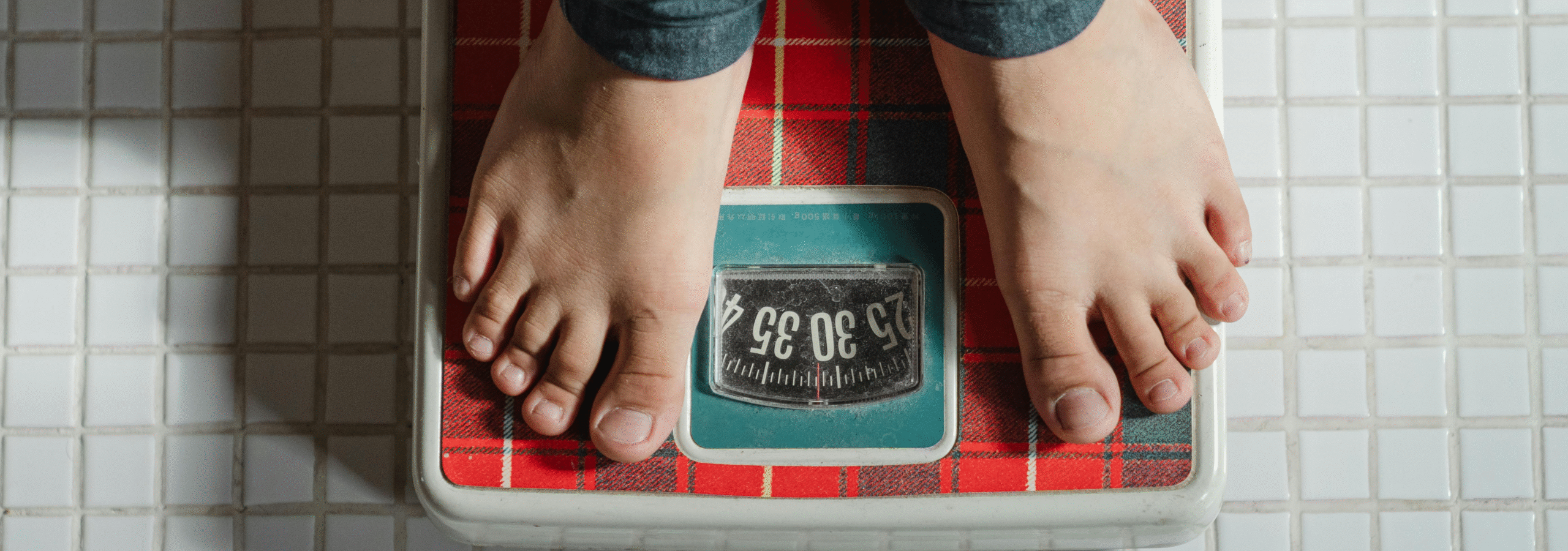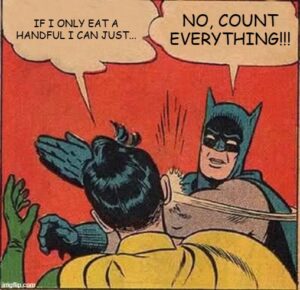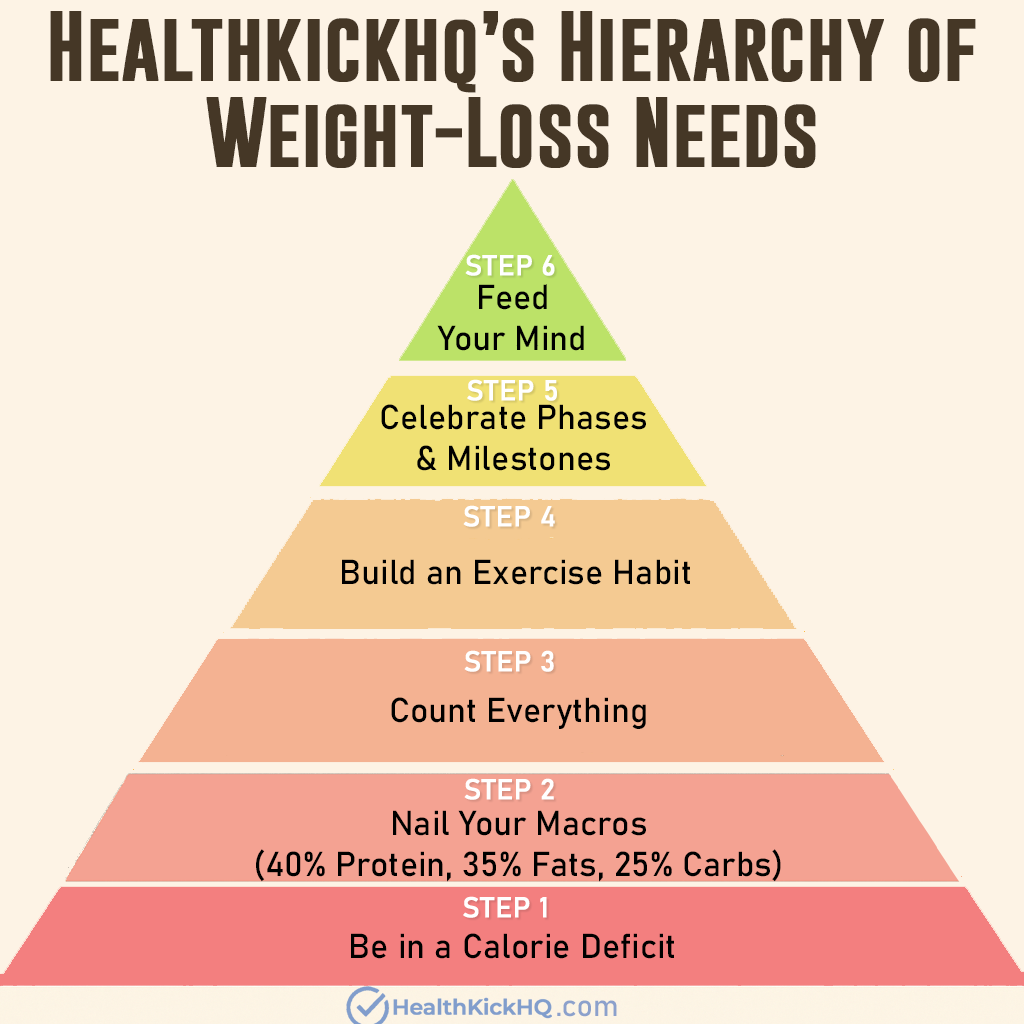STEP 3: Count EVERYTHING
SET GOALS, TRACK PROGRESS, SEE RESULTS
By Chad | Updated 9/2/2025

“What gets measured gets managed.”
— Peter Drucker (and every successful dieter, ever)
A lot of diets fail for one simple reason.
You think you’ve eaten fewer than 1900 calories. You promise you only ate (calorie counts are approx.):
-
- Breakfast – 3 eggs (225 calories), 2 pieces of toast (150 calories), and veggies (100 calories).
- Lunch – 1 ham sandwiches (230 calories), a banana (100 calories), and a protein shake (140 Calories).
- Dinner – Pork chop (400 calories), a baked potato with salt and light sour cream (450 calories), and veggies (100 calories).
In total, you think you only ate 1895. Your goal was between 1800-1900 calories a day. But after 3 weeks, you found you GAINED weight. Why?
Because you didn’t count:
-
- The butter you glopped heavily on your bread to make toast (150 calories)
- The handful of grapes you ate as you left the house (50 calories).
- The “small taste” of chocolate cake you had at work (100 calories).
- The glass of milk you had after work (200 calories).
- The soda you had at your desk (260 calories).
- The handful of popcorn you had while watching TV (100 calories).
That might FEEL normal to you, but you added 860 calories to your day! Sorry, but you want those “tastes” more than you want to lose weight. So, you’re going to stay fat.

When I say how to track EVERYTHING, I mean track EVERYTHING. There will be more tips later in this chapter, but first I have to drive this point into your head. TRACK EVERYTHING YOU PUT IN YOUR MOUTH.
Do you feel attacked? Good. Stop it. DON’T EAT ANYTHING YOU DON’T COUNT.
“But but but what if it’s my birthday… then can I not count something…?”
NO! You count EVERYTHING you put in your mouth. (If you decide to consume a few more calories on your birthday, go for it, just don’t pretend the calories don’t count. Your average calorie intake will still be okay if you go a bit over on your birthday).
“But it was just a small handful of nuts.”
I DON’T CARE! COUNT IT.
You have to even count:
-
- The butter you add to toast.
- The mayo you add to your sandwich (pro tip: light mayo tastes about the same as normal mayo and is way less calorie-dense).
- The Parmesan cheese you add.
- Barbecue sauce (more dense with calories than you think).
- Sour cream (another time the light version tastes the same but drastically cuts calories).
- Etc.
How To Track It
Personally, I track my daily calorie intake on a calculator on my phone. I also record weekly calorie averages in a spreadsheet.
It doesn’t matter how you track your calories throughout the day, even paper and pen will suffice. Just choose what’s MOST convenient for you and use it. You can make a copy of this spreadsheet if you want, some of the people I’ve worked with have enjoyed that method (it’s just an option).
There are many apps that help you track for free and they are great tools if it’s something you’d like. The two most popular calorie-tracking apps I’ve found are:
Functionally, there’s little difference between the two. Both are available on Android and iPhone. Choose the UI that is easiest for you and go for it! I have used both those apps in the past, but for me it has become simpler to use a calculator. Whatever works for you is what’s best, it’s all preference.
Food Scale
In order to count everything, you need a food scale. They’re not that expensive. This is the one I use.
With a food scale, you NEVER have to guess how many calories are in the food you’re eating. Read the label, it will say how many calories are in a food item. Then look at the serving size. Usually, it will say a certain number of grams, ounces, or similar. You can set your food scale to the correct unit of measure, weigh the food, and viola! You know EXACTLY how many calories you ate.
Additionally, you can google or ask AI how many calories are in each element. If your in-laws cook steak, google “how many calories are in 1 oz of cooked steak.” It’ll give you an answer. If you’re at a Rodizio restaurant, google each meat’s calorie/ounce (make sure it says cooked) and weigh it! You never have to “guess” how many calories you eat when you have a food scale.
And again, you count EVERYTHING you put in your mouth. Do not eat or drink anything that you don’t count. Don’t forget to count the butter you add or the oil you put in the pan (those two will kill your diet if you don’t track them).
There are so many things to keep track of when you’re losing weight. Macros, daily weigh-ins, calories—it can feel overwhelming.
Reading Labels
Pay Attention to Serving Sizes

This label looks innocent enough, right?
You might think this frozen lasagna is a decent meal — decent macros, some protein, low calorie. The label says 280 calories, so you’re thinking:
“Sweet, I’ll just log that and move on.”
WRONG.
Look at the top of the label.
4 servings per container.
If you eat the whole tray (which most people do), that’s 1,120 calories — not 280.
Why This Matters
Food companies know how to play the numbers. They shrink the “serving size” just enough to make the calories look low. But if you eat more than one serving — which you almost always do — you’re eating way more than you thought.
That’s why serving size is the first thing you should check on any label. Not the calories.
Serving size tells you how many calories you’re actually eating.
How to Track It Right
- Look at the label.
Find how many calories per serving. - Check the serving size.
It’ll usually be in grams, ounces, or cups. - Weigh your food.
Use your food scale to measure your portion — not the “suggested” one. - Do the math.
If the label says 100g = 200 calories, and you ate 150g, log 300 calories.
If you’re not weighing and checking the label, you’re just guessing.
And when you guess, you almost always eat more than you think.
👉See lesson 6 for what might be the most important yet: mindset.
📌Notes to Keep From This Lesson 📌
- Count EVERYTHING you put in your mouth
- Pay attention to serving sizes
- Butter, oil in the pan, etc. all count for calories
- Use a Food Scale

